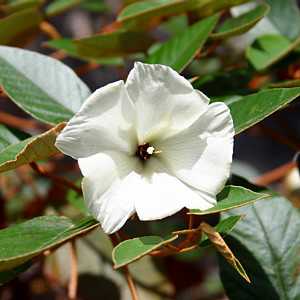
Bees and Beekeeping
…and don’t forget the honey
The only reason for being a bee is to make honey. And the only reason for making honey is so I can eat it.{b}
⏱ QUICK READ
Bees were introduced here in the 1920s, and our island’s isolation has protected them from the many challenges threatening bees the world over. We also produce some of the world’s purest honey… Learn about our bees and our honey on this page.

All our domesticated bees are the same species: apis mellifera. They have two origins: Italy apis mellifera scutellata and South Africa apis mellifera capensis.
History
It is not clear whether any species of bees made their way to St Helena naturally but we do know that honey bees were formally introduced - more than once… According to the Records:
In ‘St Helena and Ascension: a Natural History’{1} by Philip and Myrtle Ashmole we read that here may have been introductions in 1824, 1868, 1869 (as above), 1878 and as recently as September 1949, though this latter may have been new genes to improve the stock rather than a true introduction.
An analysis conducted by a Professor Joe Waddington in 2011 found that our bee is of both Italian and African strain, having been here since the early 1940s. This also shows that any other species that may have been here before the formal introductions are no longer present or have not been recently recorded.
Beekeeping today
Today the island has several beekeepers and a thriving Beekeepers’ Association. Local honey is produced, though volume does not meet demand so it is mostly sold privately and rarely reaches the shops. In some years bad weather can also reduce supplies so that the bees only just have enough for their own needs, with none to spare for humans. If you do manage to find some it is delicious!
The Beekeepers’ Association estimates there to be around 300 active hives on the island, including non-members. In addition there are many feral swarms, some of which live in Jamestown and are so embedded into the cliffs they can’t be removed for fear of causing a rockfall! Despite the many sub-climates on the island there are no areas where bees do not thrive.
Apart from the risks of imported diseases the only local bee predator is the Wax Moth Galleria mellonella and Achroia grisella, whose larvae can quickly destroy stored beeswax combs, tunnelling and chewing through combs, particularly ones that have contained brood and pollen. Fortunately attacks are rare. Bee Louse Braulidae are found in hives but do not do any harm.
Since the beginning of the 21st Century the Beekeepers’ Association has been running a campaign ‘Plant a Flowering Tree for the Honey Bee.’, to improve the food stocks for the island’s bees. More food → more bees → more honey!
That buzzing noise means something. Now, the only reason for making a buzzing noise that I know of is because you are a bee! And the only reason for being a bee is to make honey. And the only reason for making honey is so I can eat it.{c}
Honey Import Ban
It is specifically prohibited{2} to import honey or any honey-related product into St Helena. This is to protect our bees from diseases such as the Varroa Mite, which nearly wiped out bees in western Europe towards the end of the 20th Century, Colony Collapse Disorder, which also devastated bee populations in the early 21st Century, and American or European Foulbrood{3}. Because we are approximately 1,900Km from the nearest mainland these diseases cannot spread here naturally but could easily be imported accidentally by humans.
Even processed honey products brought here could carry these diseases. Under the 2013 Regulations it became permitted to import certain honey-based medicinal products but only under strict conditions.
The net effect is that we do not need to use pesticides to protect our bees, and hence their honey is completely natural and 100% organic.
If you discover a swarm…
If a swarm lands in your garden or invades your premises you need to contact the Beekeepers’ Association. Contact details are: Earl Henry (+290) 24313, Tony Leo (+290) 24725 & Pat Stroud (+290) 23773.
Fascinating Bee Facts

If a beehive becomes too hot (i.e. more than 36°C) workers are stationed at the entrance to fan in cooler air - air conditioning!
Gorse ulex europaeus grows wild on the island and is considered an invasive species, but is also a popular food for our honey bees.
A hive may contain around 75,000 bees, but only one mature queen. She can lay up to 2,000 eggs per day.
A hive of honey bees must tap 4.4m flowers to make 1Kg of honey.
The world’s largest species of bee is thought to be Wallace’s giant bee Megachile pluto, whose females can attain a length of 3.9cm. The smallest species may be dwarf stingless bees in the tribe Meliponini whose workers are less than 2mm in length.
A bee’s wing flaps at around 230 beats per second, which explains the low pitch of its buzz - 230Hz A♮3.
Bee Observances
Below: Honey Month World Bee Day
Honey Month
Honey Month is celebrated in September (perhaps more relevant in the northern hemisphere).
World Bee Day
The United Nations’ World Bee Day, on 20th May, celebrates bees and other pollinators which are increasingly under threat from human activities. It is not formally celebrated on St Helena, but if you do want to celebrate it, buy some local honey in the shops (if you can find some!) and enjoy it on hot buttered toast, or maybe make some Loquat & Honey Tart.
For more annual events see our page This Year.
Read More
Below: Articles: Plant a Flowering Tree for the Honey Bee Loquat & Honey Tart
Articles: Plant a Flowering Tree for the Honey Bee
Starting on 5th October 2017 The Sentinel published a series of articles authored by Tony Leo, secretary of the Beekeepers’ Association, talking about bees and beekeeping on the island. You can download these from the SAMS website. We reproduce the first article below:
Being involved with the Bee Keepers Association for many years I come across people who are always trying to find a bottle of local honey. At this time of year it is a very scarce article and only those who have hives and might have a bottle or two left from the last harvest might be able to assist.
Honey has many medicinal properties and is sought after by those who have caught a flu bug and suffering from a sore throat, or it could be one of those who need a constant supply of honey and the same amount every day prescribed by a doctor. The uses for honey are endless and the island just cannot produce enough of it. You may ask, why not allow honey to be imported from overseas? This is a good question but imported honey could carry diseases and already the bee colonies on island are very fragile. This island would not stand a chance if the American Foul Brood was introduced by way of imported honey. Honey producers in many parts of the world are suffering from the loss of their apiaries due to diseases such as American Foul Brood, European Foul Brood and Verroa which are some of the most devastating diseases that we definitely don’t want on island. You may ask how imported honey could affect St. Helena. Well, a bottle of honey finding its way to St. Helena by a Yacht or Aircraft or by a ship might contain those diseases mentioned. When you look at the label on that bottle, you may see that it came from a well-known firm in the UK such as Safeway the Co-Op the Spar or some other distributer. Very seldom will you find the label containing the country of origin. Many European Countries send large quantities of honey in containers by truck across the continent to the UK to be processed. This honey is processed with many other honeys, and it is bottled and labelled. All bottled and canned goods with pretty labels look good and are well presented which encourages sales. A bottle of honey that you purchased in the UK or South Africa might contain more than one disease that you cannot see. The honey is alright until it is opened. The contents will not affect you but the bottle when empty, and if dumped in the bin will definitely attract the honey bee. Bees will scent the sweetness as it is airborne and the bee will zoom right into the bin and fid the empty honey bottle. Remember that empty bottle is not empty at all. It holds the residue of the honey in the cover and in the bottle itself. A bee only has to touch the residue with its legs and whatever diseases are in the honey will be taken back to the hive. The bee will take as much of the leftover honey from that bottle as they can carry, return and take it back to the hive and relate to other bees that there is feed in a particular direction. If that actually happens, we can say goodbye to the bees of St. Helena because there are some diseases such as the American foul brood or the European foul brood that will kill all bees on contact and the hive will collapse. There will be no more bees on island, no more honey and all our vegetable plants, such as cucumbers and pumpkins, beans, peas and many more vegetables will not be pollinated. Bees pollinate 99% of all the food we eat. Without bees Man is Doomed.
St. Helena is free from bee diseases as far as it is known and we want it to remain that way. Watch out for more episodes of Bee Talk in the weeks to come.
PLEASE NOTE: Not all the material presented above is scientifically correct.
Loquat & Honey Tart
A popular dish with local ingredients.
Ingredients
| Method
|
Serves 4; with cream or custard if desired.
More recipes on our page Fishcakes, and other food.
Credits:
{a} Copyright © South Atlantic Media Services Ltd. (SAMS), used with permission.{b} Winnie the Pooh{c} Winnie the Pooh
Footnotes:
{1} Anthony Nelson, 2000, ISBN 0 904614 61 1.{2} Under the Bees Ordinance, 1995Ⓘ.{3} The full list includes: American Foulbrood paenobacillus larvae, European Foulbrood melissococcus pluton, Varroa diseases varroa jacobsoni and varroa destructor, Nosema diseases nosema apis and nosema ceranae, Acarine disease acarapis woodi, Amoeba disease malpighamoeba Mellificae, Small Hive Beetle infestation aethina tumida, Tropilaelaps mite infestation and Israeli Acute Paralysis Virus.

